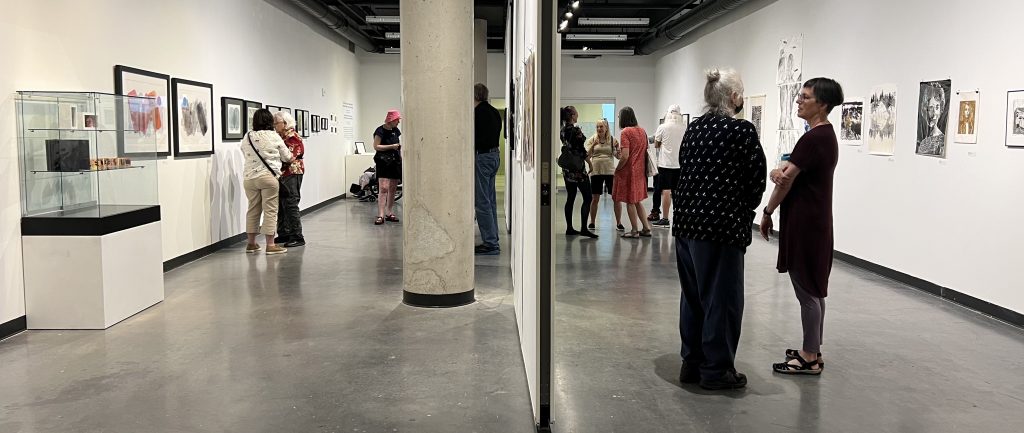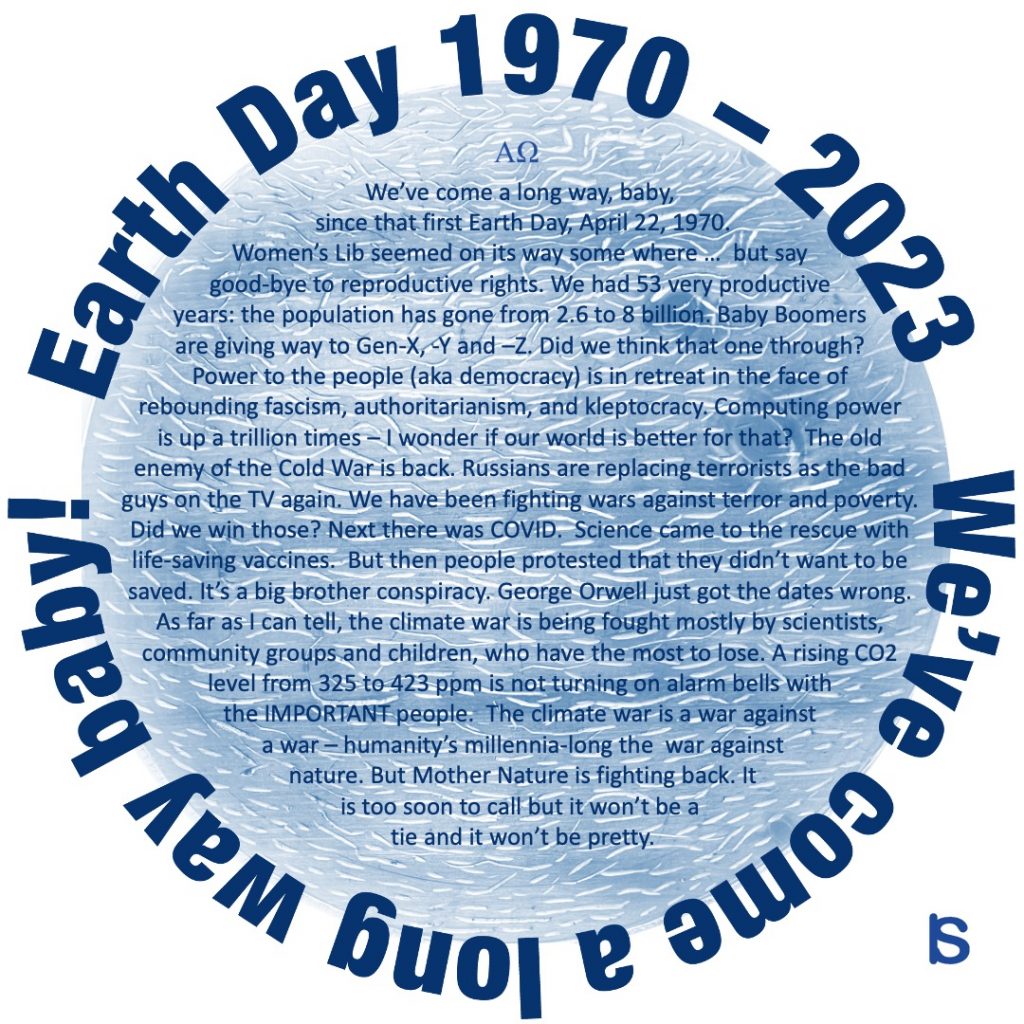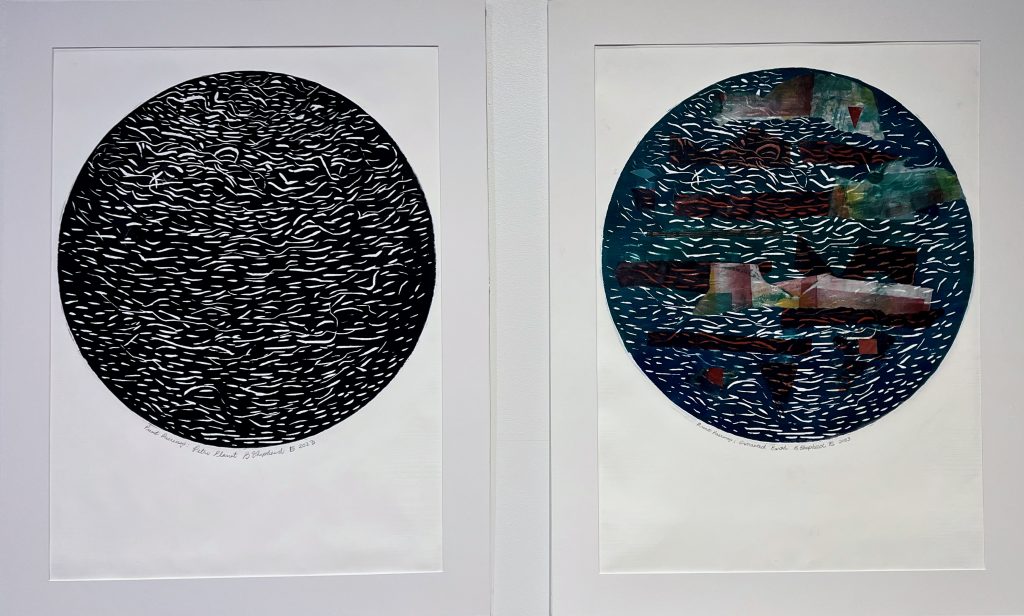In the spring of 2023, the Ottawa School of Art Orleans extended a special invitation to the Ottawa-Gatineau Printmakers Connective to put on a group exhibition in their fabulous gallery at the Shenkman Arts Centre. OGPC worked with the OSAO gallery coordinator, Nadine Argo, to establish an interesting theme: Print Pairings: Colour vs Black and White (May 14-June 24, 2023). Participating artists were asked to provide a pair of prints – one in black and white and one in colour – that would demonstrate how they use colour or black and white to convey separate meanings, place different emphases, create distinct moods, or express diverse emotions around a related theme or image. Because the OSAO gallery has no rules about framing, this was an ideal opportunity for OGPC members to submit larger pieces without incurring the prohibitive costs of framing.

My Submission: Planet Earth Series
A couple of years ago, I made a big woodcut on a piece of scrap 34 by 25-inch plywood. I cut a textured circle sitting positioned high on the wood sheet — a nod to the iconic Earthrise photo taken by Apollo 8 astronaut William Anders on December 24, 1968. After making a proof of the woodcut, I just forgot about it – it was too big and there weren’t many opportunities for this topic. Then for Earth Day this year I pulled it out and used a photo of the plate as the background for a concrete poem acknowledging Earth Day 2023 entitled “Earth Day 1970-2013 We’ve come a long way, baby!” (Figure 2).

For Print Pairings I used the plate as a tableau for reflecting on the climate wars taking place on our fragile planet. The interplay between the black & white and the coloured prints represents the global struggle between petrochemical and green-tech politico-economic behemoths duking it out. We now recognize the harms of our dependence on fossil fuels and climate change. As we struggle to reduce our global CO2 footprint, new technologies have their own negative consequences that result from mining of minerals, metals and rare earths required for green energy. And despite a shift to “green” energy, petrochemical giants continue to extract oil, coal, and natural gas.

Petro Planet is a black-and-white relief print starkly reflecting on humanity’s dependence on fossil fuels. Humanity’s power to affect planetary systems accelerated after World War II with expansion of global production, especially in the petrochemical sector. Although many scientists, politicians, and people everywhere continue to express concern about the impacts on the fragile blue planet, global fossil fuel interests continue to extract oil, coal, and gas to fuel an overheating Earth.
Extracted Earth is a colour relief print with collage elements reflecting on the negative impacts of extracting scarce or difficult-to-obtain materials needed for new green technologies. As pressure to limit CO2 rises, many nations are transitioning to a renewable energy infrastructure including solar panels, wind turbines, and battery-driven vehicles. Transition to green technology requires the extraction or recycling of often toxic metals, minerals, and rare-earth substances that severely impact workers and environments where they are mined, processed, and if applicable, recycled.
